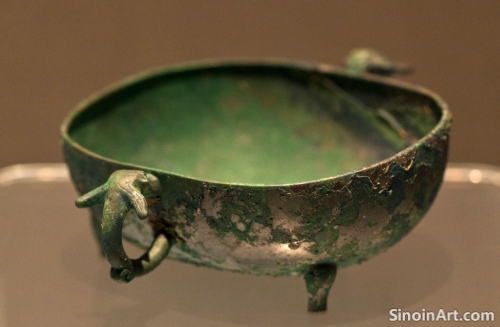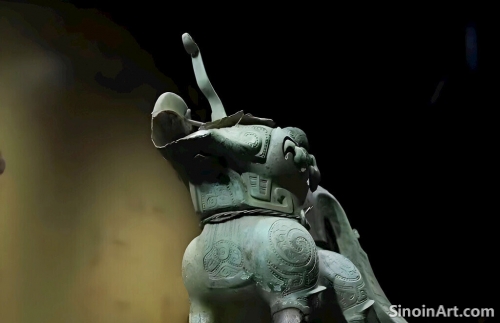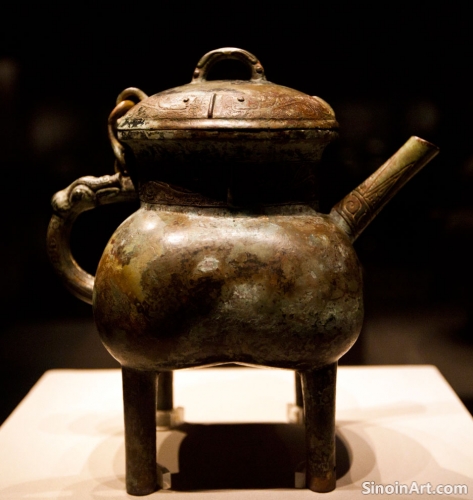The Influence of Shang Dynasty Bronze Ware on Later Chinese Art Forms: Motifs, Techniques, and Symbolism
|
The bronze ware produced during the Shang Dynasty, with its distinct forms, powerful motifs, and sophisticated techniques, had a profound and lasting influence on later Chinese art forms, helping to shape the course of artistic expression for generations to come. The innovations of the Shang era laid the foundation for many aspects of Chinese art and design. The study of the Shang dynasty helps to illuminate both the beginnings of Chinese art and also its later manifestations.  The taotie (饕餮) motif, a dominant design element on Shang bronze ware, continued to appear in later Chinese art, often adapted and reinterpreted but still retaining its symbolic power and its connection to the animal world, and to the powers of protection and spirituality. The persistence of the taotie motif speaks to the enduring power of the symbol and its continued appeal to Chinese artists.  The precise casting techniques used by Shang bronze workers, including the methods of mold making, alloy preparation, and decoration, continued to inspire and challenge later artists, encouraging them to push the boundaries of metalworking and other forms of artistic creation. The innovations of the bronze workers of this time helped to set new standards of both craftsmanship and technical knowledge.  The overall aesthetic principles of balance, symmetry, and symbolic meaning, which were hallmarks of Shang Dynasty bronze ware, also had a lasting impact on later Chinese art, particularly in the fields of sculpture, painting, and decorative design. The Shang style became a template for future generations of artistic innovation. The ability of the style to maintain its relevance throughout Chinese history speaks to its underlying power. The enduring influence of Shang bronze ware is a testament to its lasting importance in the history of Chinese art, and its continued role in inspiring new creative expression. The legacy of this period continues to resonate in both the fine arts and also in the traditions of Chinese craft and design. The careful study of the Shang era offers a clear perspective into the core values and artistic principles of Chinese culture. |
Tag : Shang bronze influence, Chinese art motifs, taotie legacy, bronze techniques, ancient designs
Related information
- The Impact of Bronze Ware on Ancient Chinese Society: A Social Perspective
- The Evolution of Bronze Casting Techniques: From Early Molds to Complex Vessels
- Bronze Ware and the Development of Ancient Chinese Maritime Trade: Ship Fittings and Navigation Tools
- The Influence of Bronze Ware on the Development of Ancient Chinese Military Strategy and Tactics
- The Role of Bronze in Ancient Chinese Storytelling: Depictions of Myths and Legends
This article examines the impact of bronze ware on ancient Chinese society, exploring its role in shaping social structures, political power, and religious beliefs, and demonstrating its profound influence on various aspects of ancient life.
This article explores the evolution of bronze casting techniques in China, from simple molds to the piece-mold and lost-wax methods, highlighting the technological innovation and artistic mastery of ancient Chinese metalworkers.
This article explores the use of bronze in ancient Chinese maritime trade, highlighting its role in creating ship fittings, navigational instruments, and its impact on the development of long-distance trade routes and exploration.
This article explores the influence of bronze ware on ancient Chinese military strategy and tactics, highlighting its role in the development of weapons, armor, chariots, and how these technologies transformed the nature of ancient warfare.
This article explores the role of bronze ware in ancient Chinese storytelling, highlighting how bronze objects depicted myths, legends, and heroic figures, and how they helped to preserve and transmit cultural narratives through a visual medium.